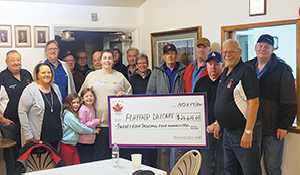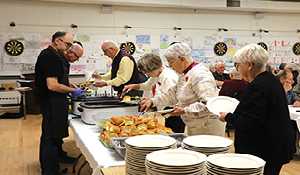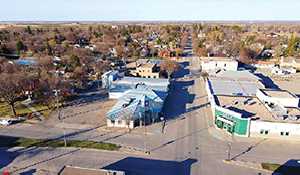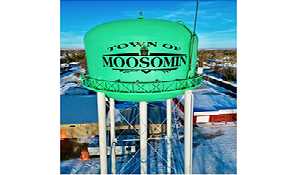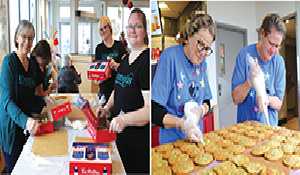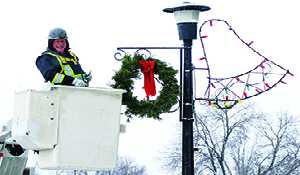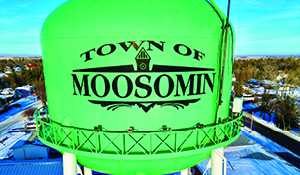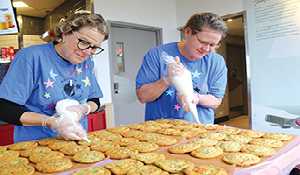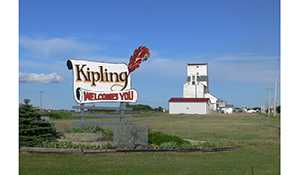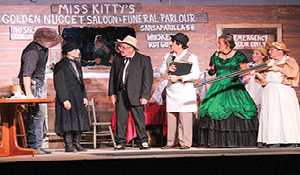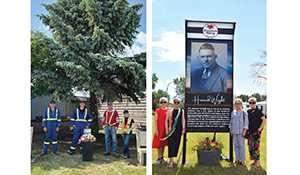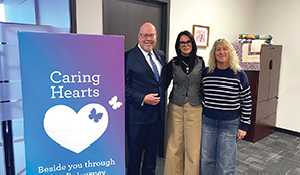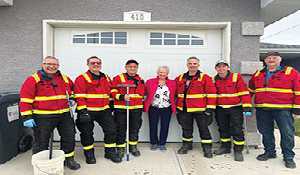Scott Moe visits southeast Saskatchewan
Visits Redvers Ag
September 3, 2024, 3:13 pm
Ashley Bochek
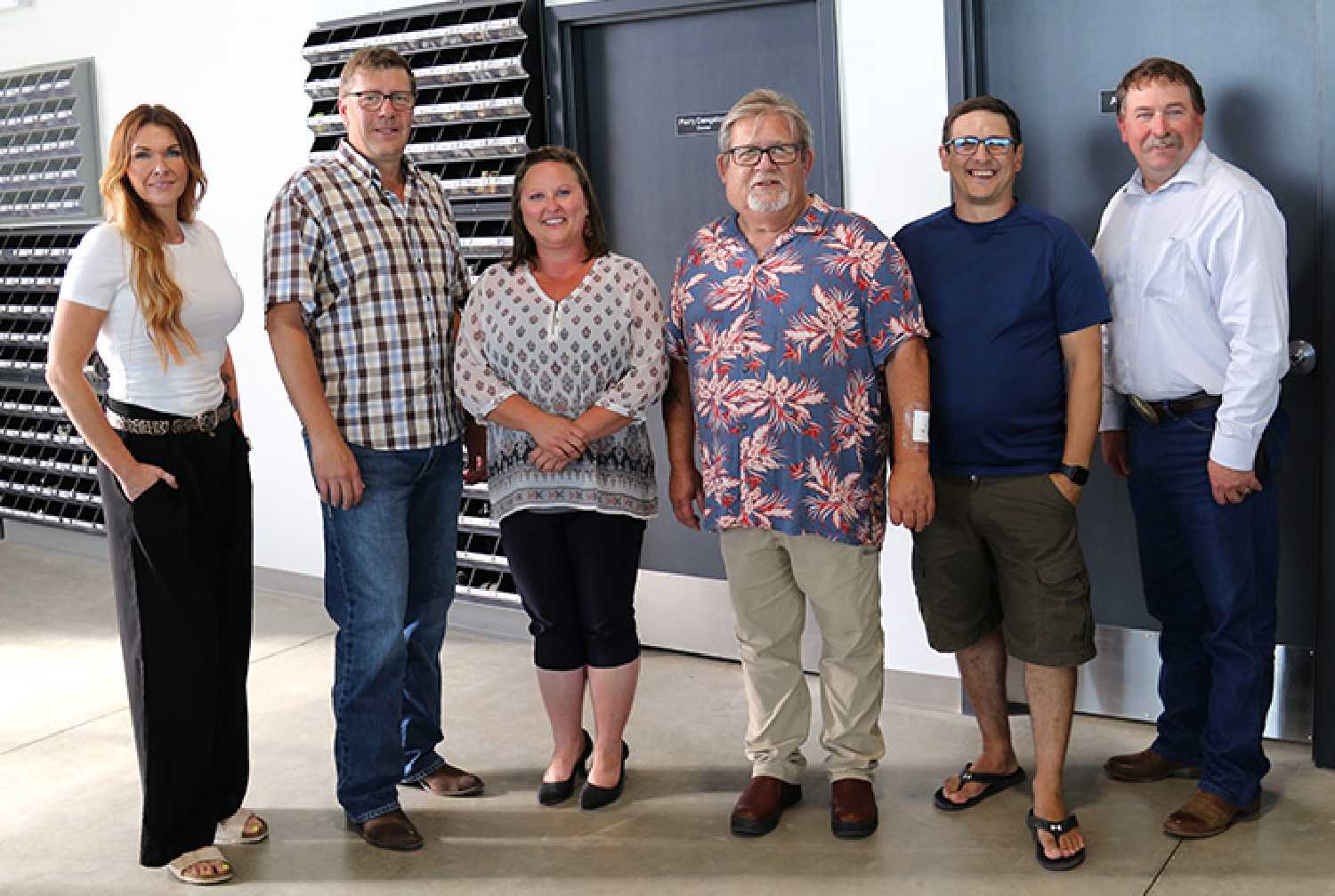

Premier Scott Moe visited southeast Saskatchewan Tuesday. He toured the town of Redvers and local businesses, along with other communities in the Cannington constituency. Ashley Bochek and Kevin Weedmark met with the premier at Redvers Ag.
The premier started by saying the World-Spectator stands out as a media outlet. “It is a great business and there is not a lot of vibrant young people in it. Your paper is one of the exceptions to what has been happening in the last five years. You have to report the news and reporting what the people want to read, not all the papers are doing that. It is a struggling market, but there are ways through that and the World-Spectator shows that it can be done, and a few others are as well,” Moe said.
The full interview follows:
Why are you here in Redvers today and what is the purpose of this tour?
We have been out in a number of communities from corner to corner to corner of this province. Redvers today is just a continuation of that, greeting and talking to people about what is working well in their community and how the province can continue to support the work that is happening in many of our communities including today in the Cannington constituency. Then, also asking where do we need to do some additional work together and there is always good answers, but how you learn and how you can ultimately bring some better information to the decisions the government makes is to listen to people just like we are in this constituency today, talking to the people here in Redvers.
When you do tours like this and talk with different communities and hear their issues, does it go back to the government to be discussed on the provincial level? Does it make a difference?
It goes back in three different ways. First, is the specific issues that will be raised and Daryl Harrison, the MLA here, has to raise this with the relevant minister and have a discussion about what is the best path forward from the perspective of the community, what are some of the hold-ups or why it is the way it is from the perspective of the government and then let’s chart a path forward. There are specific issues that are raised that we are trying to navigate through with the MLA and the relevant minister.
Secondly, it provides myself and the MLA both with new macro information on what is happening in rural communities and RMs in this part of the province.
Then the third way, I have the opportunity to visit a number of different communities. For example, two weeks ago I was in Fond-du-Lac, a week before that I was in Frontier, Saskatchewan, and then I live about in the middle of the province, just outside of Prince Albert. Then to bring all of that together for a summary for both our cabinet and caucus to know what is on the minds in certain areas.
We are a very diverse province from our urban centres, to our rural communities, to our northern communities, and this area of the province which is not only focused on agriculture, but has one of the strongest oil industries in not only in Saskatchewan and Canada, but the world and starting to look into things such as lithium and other resources. You get up to Moosomin and you’re in the potash mines as well as pipeline transfers, so there is diversity in our province and we are able to bring that together through visiting the various communities.
What have you heard in the Cannington constituency today?
I have heard a lot on agriculture today with where we are, and the weather the last few days which is typical in a rural area. I know that we have got about three inches of rain over the last few days and a few areas that had quite a bit of wind, but the crops are starting to come off around average and we wish everyone a safe and prosperous harvest in this area.
Access to health care is always a concern in rural communities and I would say there are some pretty innovative models down here where the community is very much involved in not only physician recruitment, but actually employing physicians and everything else. It’s always nice to get down and come talk to the leaders, not only town councils, and RM councils, but community leaders. Communities are heavily invested in their health care operations and access to health care for the people they represent and that is extremely helpful for myself, personally, but also for Daryl who will be communicating as well back to the health minister where a few challenges are, but also where a few things are working and working well. Those are the two things that came up.
Also, highways questions as well. We haven’t been able to fix all of the highways in the province as hard as we have attempted, but we are going to keep trying and there is more work to do.
The other one that was interesting, we were just at the Southeast Butcher Block, and that was interesting to talk to them—he actually has global market access. The epitome of value added where they are taking animals from the area and making them into prime cuts and selling it back to people in the area, the region, and then also shipping them off to some of the grocery stores of the area—what a value-added resiliency measure for local producers. Then, we were talking about how global cattle prices really have an impact on the profitability of that business and the profitability of the farms, so they’re insulating themselves and making themselves more resilient from an operational local value added perspective. Then, I was talking about some of the work our global trade offices are doing, in ensuring we have market access for their products in not only the US, but some other countries around the world as well. I found that interesting how the two are very different initiatives, but very much working in tandem to ensure the market access, the profitability, the efficiency of our local ranchers in this case. That’s an example of things that are working well.
Last year the provincial government came on board with funding Moosomin’s airport with a unique four-way funding partnership. The runway is now completed and the Air Ambulance is serving the area as well as corporate jets. What do you think about this project and do you think that unique structure is a way forward for a lot of rural projects?
It is outside the parameters of our general funding structure, but we looked at it as a one-off pilot project because we were asked to by the community. It’s a rare situation where we had an industry partner come forward and we had a community come forward to look at doing this funding formula that really hadn’t been done before to address the needs of the area. Not only Moosomin many other places in the province are changing. They’re changing all the time. We have Nutrien that is a world-class mining company and we have some of the world’s largest mining companies that are actively investing not millions, not hundreds of millions of dollars, but billions of dollars right here in the province of Saskatchewan. Connectivity and access is an important discussion for our province, but it is an equally important discussion for many of our communities that are connected to these companies that are working in the global space.
When you look at our agriculture industry, and look who is investing in that space, when you look at our mining, you look at the companies that are investing in the potash space as well as the uranium and copper space, those are globally invested companies and companies with global stature. The same holds true for our energy industry down in this part of the province.
Saskatchewan very much is a global player that is why we have a provincial presence on the ground in nine different countries. That is why you see the Saskatchewan government in Washington, DC, and other areas of the US advocating on behalf of the industries that are creating wealth in our communities including the community of Moosomin. That is why I think it is important and a credit to the folks in Moosomin that really initiated this project by coming forward and putting together the partnership group that ultimately funded it.
It was a good project, but not one that fit in the parameters of what government has traditionally done, but a very beneficial project for not only Moosomin, but for the surrounding area. It was a good project for this province as well.
In Grenfell the nursing home project is awaiting retendering. What would you say to the people of Grenfell regarding the future of this project?
There are a lot of variables in tendering any project right now. As we have in excess of 20 schools that are either in the planning stages or actually being constructed as we speak. We have a number of long-term care facilities, a few hospitals, highways and all sorts of other provincial infrastructure in the planning stages. What we are finding is a high degree of variability in the tenders that have been issued. So at times—and this isn’t the first time and I doubt it will be the last time—when some of those tenders fall outside the parameters of what is reasonable, we get back together and regroup and then retender with some different parameters so that we can ensure the project is being built, but in the parameters the SHA (Saskatchewan Health Authority) has, and the expectations of the community.
Ultimately the community of Grenfell can know that the government is committed to this project, we’re building this project, and it will be back to tender as quickly as possible.
The Moosomin District Healthcare Foundation has been working on a proposal for a CT scanner for the Southeast Integrated Care Centre and there was some indication from the province earlier this year there might be a unique solution to that issue. Do you know where that process is at right now or what do you think in general of the need for advanced diagnostic equipment in rural Saskatchewan?
I think there is an opportunity for this. There are a number of different ways it could move forward. There is public partnerships, private partnerships, public commitments, there are public MRIs that could be placed in communities as well. We just went through a similar discussion with an MRI in the community of Estevan and a CT discussion a few years ago in the community of Melfort.
What is important here is three things, one is for the community to continue to work with the Saskatchewan Health Authority on what model they feel is best going to serve the community, and then have the Saskatchewan Health Authority weigh in as well with some of the data they have. Then work with the locally elected representatives as well to ensure that we are satisfying both those demands as we look forward to whatever that model may be. I think it is very real that we would move forward with some type of diagnostic model in the community of Moosomin. The need has been put forward by the community again and we’re thankful for that. I think the SHA is finding a way to incorporate their data into it. Now it is just a matter of what model is going to work best for everyone else involved and we’ll find a place for that. Certainly I think we will move forward with it in the not so distant future.
We are very fortunate in a community like Moosomin which is experiencing population growth and experiencing economic investment in the area, and it is very indicative of what is happening in the province. As we grow our services to the people that live there, like diagnostic services—that is only possible through the strength of a growing and vibrant economy and so we are very fortunate as Moosomin is kind of a litmus test as to what is happening in the rest of the province of Saskatchewan. We’re so very fortunate to live in what I think is the best province, in what I still believe is the best nation in the world.
In communities like Redvers, retention of health care professionals is an issue. What can the provincial government do to help in rural communities facing this issue?
Those are some of the discussions we had not just in Redvers, but in Stoughton and other communities on various medical health professionals whether that be physicians, access to nurse practitioners, RNs that are providing services and we do have a provincial health and resource action plan which is one of the most ambitious in the Canada, but we also need to remember and ensure that we are working closely with the needs in each community and Redvers is among them.
One of the pieces of our health care human resources plan is the Saskatchewn Healthcare Recruitment Agency. We want this group to be a focus on recruiting any health care disciplines that we need. We have the SHA which is the employer, the local communities which have their own recruitment committees—I was on one in my community before I was elected—for the provincial recruitment agency to come in and really overlay with the local community so that our supports are complementing some of the local communities so that we’re more successful. It is different from community to community some are providing some housing, some are providing some incentives, and we just want to make sure that we are not trampling on one another, but we’re actually working together.
With the general election coming up this fall, what are the main messages the Saskatchewan party is going to be trying to get out to the people of the province?
Each of us that have served in government and on both sides, opposition or government, we’re certainly imperfect individuals and we haven’t been perfect as a government and we understand that. Where we have made errors what we try to do is get on tours like this, listen to people, and change the direction we may have taken. We’re always working to make the best decisions. That being said, when election time comes around whether that be municipal, provincial, or federal, it is not about perfection. Elections are about choosing and a choice of who is going to make those very decisions on behalf of you at the provincial level over the course of the next four years so we will be running on the record that we have which has been a growth-focused record and what we do with the growth of our economy, growth of our population, and the growth of our communities is we reinvest that, buy into the very communities that we represent, a water-treatment facility in Redvers for example, an airport in Moosomin, possibly a diagnostics centre in the future in the community of Moosomin. Those are examples of the investments that are only possible when there is a strong, growing, vibrant economy in our communities and in our province. That is what is attracting young people to stay here and to live here, and to raise their family in the same way that I was so fortunate to be raised in this province and you can contrast that with other parties that are running. They just simply don’t have that record of growing the Saskatchewan economy and growing our own opportunities for people to stay here and growing the opportunity we have as a province to reinvest back into our communities.
What we are hearing in our travels is that we have some work to do when it comes to access to health care in all communities, access to surgeries, to primary health care in some of our rural and remote and northern communities and we are working very hard on that through investments.
There is over $100 million in the most ambitious health human resource plan in the nation of Canada. Investments we are making in capital infrastructure to make sure the people that are offering those services to our communities have a reasonable place and adequate place they can work in. We have heard about the very real challenge around mental health and the all-too-often subsequent addictions and you’re seeing what this government is doing in building out our recovery spaces, but also building out some of our law enforcement to ensure that the drugs—which are not the drugs of yesterday they’re literally poison that is being presented in our communities today and it is not a community away, it is our community members, our friends, and all too often our family. Those drugs need to be taken away from the drug dealers and the drug dealers need to be removed from our communities, and the way forward in that space is to increase some of our law enforcement presence.
We’re hearing about affordability, but we are also hearing and realizing that Saskatchewan today is the most affordable province in Canada to live. Our inflation rate is also the lowest in the nation of Canada. We understand that the cost of living and our paycheques are just not going as far as they did a few years ago. Relative to other provinces, we are doing much better as the most affordable place, but it still doesn’t change the fact that a paycheque is buying less than it did years ago, and certainly talking to Saskatchewan people about that as well. It is an exciting time, but a time where there is more work to do and we’re committed to doing that and that will be the value proposition that we put forward to the people of Saskatchewan as we enter into the next election. We will invest and continue to grow our economy in Saskatchewan so we can build a brighter future for the younger generation.




















